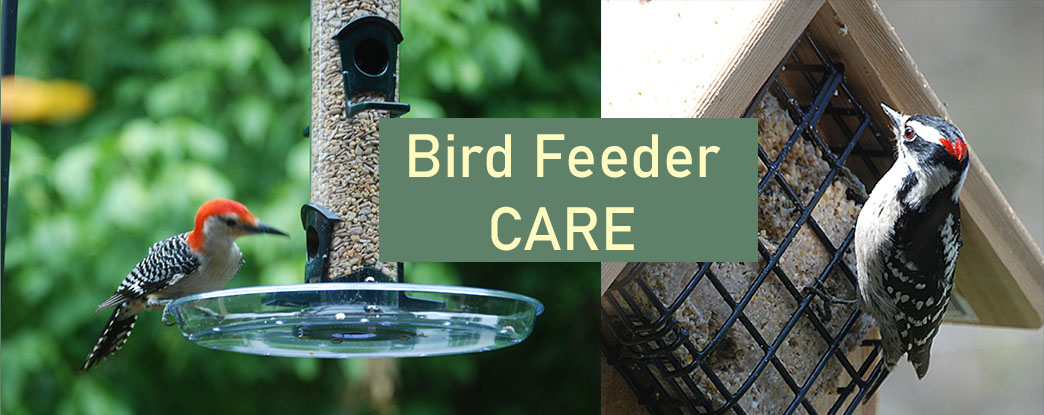
Bird feeders are great but they won’t take care of themselves. To keep our feathered friends safe, feeders require proper maintenance.
How often do you need to clean bird feeders? What’s the best way to clean them?
See this article to learn all about the best way to maintain and clean bird feeders!
On this page
Why Is It Important To Clean Bird Feeders?
It’s important to clean bird feeders for the same reasons we keep our kitchens, cutlery, and tables clean. When bird feeders become soiled with rotten bird food, they become unhealthy and even fatal for birds.

Old, watery seeds and other bits of food are the perfect breeding grounds for bacteria and other agents of disease.
In particular, mold can cause aspergillosis, a fatal avian disease. Basically, it causes backyard birds to catch pneumonia. And since birds can’t just go to the hospital, it soon becomes fatal for them.
Not to mention, once birds realize that they have a dirty feeding area, they will probably abandon that feeding spot for better, cleaner options.
However, some birds will probably still visit a dirty feeder. That’s not just a problem for those hungry birds. If they become sick and visit other feeders, they could potentially infect other birds in the neighborhood.
How often should you clean them?
To provide backyard birds with safe and healthy feeding options, we should clean suet and seed feeders at least once every two weeks. In the case of hummingbird feeders, you might need to clean them once every six days, or, in hot weather, every day!
How To Clean A Bird Feeder?
The best way to clean any bird feeder is by giving it a careful and thorough cleaning. In other words, you can’t just wipe a feeder down or give it a quick rinsing. You’ll need a brush and rags to clean every nook and cranny.
First, empty the feeder and get rid of any old food and other debris. Submerge the feeder in a container filled with water and some dish soap and clean it with a brush or dish rags. Make sure to clean every part and to give it a good rinsing.
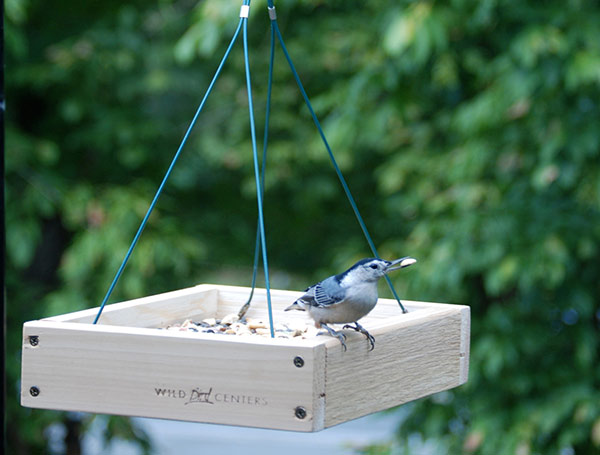
By now, your feeder is pretty clean but to be extra sure you have eliminated all the bacteria and mold, you should take one more step. Soak the feeder for three minutes in a solution of one part bleach to nine parts water.
As long as you soak every part of the feeder, it will be disinfected and clean as a whistle!
After cleaning the feeder, leave it out to completely dry. This step is vital because if it has some moisture or bits of water, mold can quickly grow on the wet bird food.
When the feeder is totally dry, you can refill it and get back to feeding the birds!
Tips For Cleaning Feeders
1. Check the seeds
Before refilling your feeder with seeds, make sure to check them for any signs of mold. If the seeds looks rotten or are wet, throw them out and buy fresh seed. You might also want to check the types of seeds you use.
Some birdseed is sold with lots of small filler seeds that few birds eat. Make sure that there are plenty of black sunflower seeds along with some nyjer, millet, and safflowers. Northern Cardinals and other backyard birds much prefer these types of seeds.
Related: Which seeds do birds eat? The ultimate feeder guide
When you fill the feeder, you should also make sure that the seeds are somewhat loose and not compacted together.
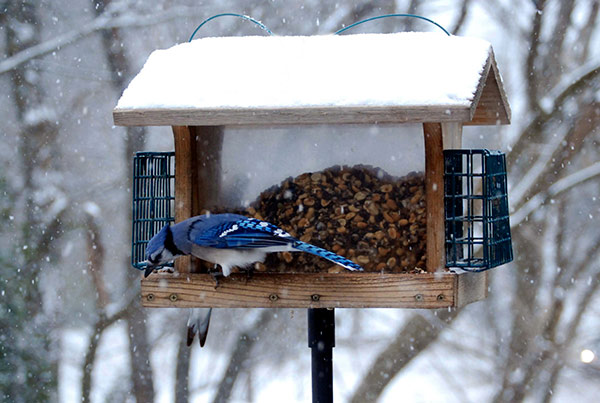
2. Don’t feed too much
It’s tempting to make sure our backyard birds have more than enough food. However, such generosity can backfire. If birds have too much food to eat, it’s more likely that some of the extra seed in the feeder will go bad and become moldy.
Extra seed that falls to the ground can also become moldy and attract rodents. However, it’s easy to avoid those problems. Just limit the amount of seed you put into and onto feeders.
Start with small amounts and then scale up until you figure out how much seeds your backyard birds eat over a day or two.
3. Keep feeders clean
It’s vital to keep your feeders clean. That can’t be emphasized enough! If you let them become dirty, fewer birds will visit and the ones that do can become sick and even die.
Luckily, it’s not that tough to clean bird feeders. You just have to keep an eye on them and make sure to clean and disinfect them on a regular basis. In general, if a feeder looks dirty, it surely is! If a feeder has wet seed or bits of food stuck here and there, it needs to be cleaned.
If you aren’t sure if a seed feeder is dirty, as a rule, give it a good cleaning at least once every two weeks.
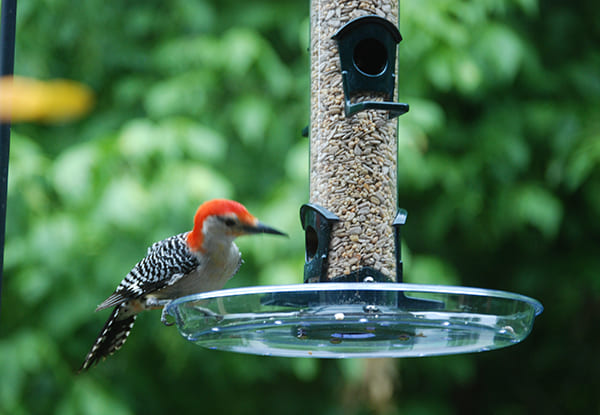
4. Wash after feeding
Don’t just wash your feeders. You also need to wash your hands. To keep your feeders extra clean, wash your hands before handling feeders and filling them with seeds.
Most of all, after touching your bird feeders, make sure to thoroughly wash your hands with plenty of soap. Birds, squirrels, and bird food can carry bacteria and other things that you don’t want to have on your hands or ingest!
5. Clean under feeders
It’s also important to clean under the feeders. A lot of bird seed can fall to the ground, especially with platform seed feeders. While sparrows, doves, and some other birds happily eat those seeds, they can eventually go bad.
To avoid spreading diseases, make sure to clean up that extra fallen seed from time to time. Rake it up and throw it out in a closed garbage bag to prevent birds and other animals from reaching it.
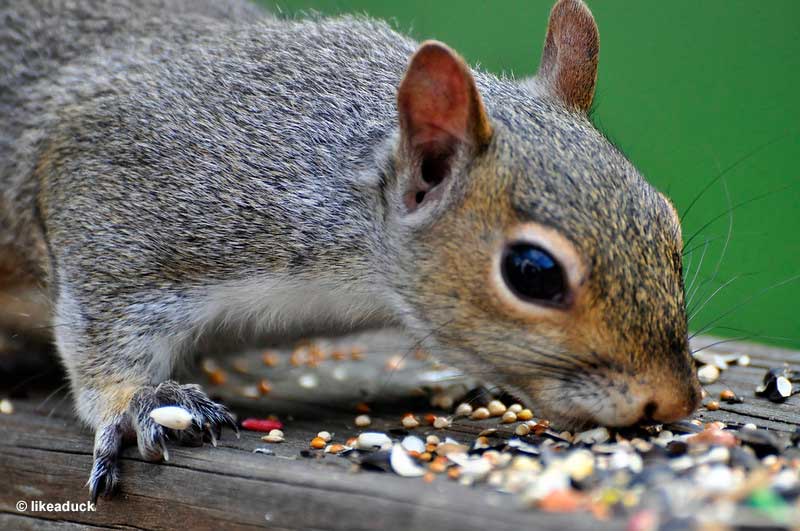
© likeaduck
6. Keep predators away
Feeders invariably attract predators and other unwelcome visitors. To keep squirrels off, use feeders with baffles; some become activated and spin the mammal right off the feeder!
You can also keep them away by installing the feeder several feet from any place where a squirrel might leap from.
To thwart cats, make sure to keep the feeder high and far enough from spots where cats can jump onto it. As far as hawks and shrikes go, there’s not a whole lot you can do other than providing birds with cover. Place feeders within 15 feet of dense vegetation.
Frequently Asked Questions
Do birds avoid dirty feeders?
Some birds can avoid dirty feeders.
How quickly do seeds go bad in feeders?
Seeds go bad in bird feeders after three days, especially if they are wet or in warm weather. In cooler weather, dry bird seed can last for a couple of weeks.
When do birds start coming to feeders?
Bird start coming to feeders as soon as they realize it’s a safe and reliable place for food. This often takes anywhere from 5 to 18 days after the first feeder in a backyard is installed.
Can birds get sick from moldy seeds?
Yes, birds can get sick from moldy seeds. They can get sick and die from aspergillosis.
Are there any bird sicknesses that are carried on through feeders?
Unfortunately, there are several bird sicknesses that are carried on through feeders. These include aspergillosis, “finch eye disease” (mycoplasmal conjunctivitis), avian pox, and salmonella.
How to disinfect bird feeders?
To disinfect bird feeders, wash them with soap and water and then soak them in a solution of 9 parts water and one part bleach.

